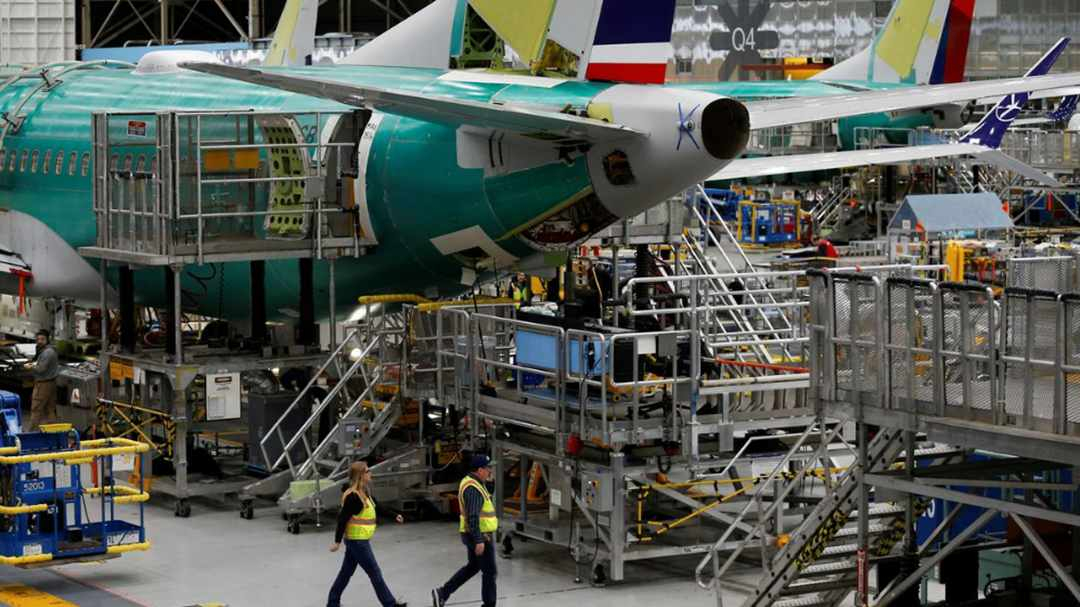
(Photo: CGTN)
Boeing Co. did not tell US aviation regulators for more than a year that it inadvertently made an alarm alerting pilots to a mismatch of flight data optional on the 737 MAX, instead of standard as on earlier 737s, but insisted on Sunday the missing display represented no safety risk.
The US plane maker has been trying for weeks to dispel suggestions that it made airlines pay for safety features after it emerged that an alert designed to show discrepancies in Angle of Attack readings from two sensors was optional on the 737 MAX.
Erroneous data from a sensor responsible for measuring the angle at which the wing slices through the air – known as the Angle of Attack (AOA) – is suspected of triggering a flawed piece of software that pushed the plane downward in two recent crashes.
In a statement, Boeing said it only discovered once deliveries of the 737 MAX had begun in 2017 that the so-called AOA Disagree alert was optional instead of standard as it had intended, but added that was not critical safety data.
A Federal Aviation Administration (FAA) official told Reuters on Sunday that Boeing waited 13 months before informing the agency in November 2018.
By becoming optional, the alert had been treated in the same way as a separate indicator showing raw AOA data, which is seldom used by commercial pilots and had been an add-on for years.
"Neither the angle of attack indicator nor the AOA Disagree alert is necessary for the safe operation of the airplane," Boeing said.
"They provide supplemental information only, and have never been considered safety features on commercial jet transport airplanes."
Boeing said a Safety Review Board convened after a fatal Lion Air crash in Indonesia last October corroborated its prior conclusion that the alert was not necessary for the safe operation of commercial aircraft and could safely be tackled in a future system update.
The FAA backed that assessment but criticized Boeing for being slow to disclose the problem.
Boeing briefed the FAA on the display issue in November, after the Lion Air accident, and a special panel deemed it to be “low risk,” an FAA spokesman said.
"However, Boeing's timely or earlier communication with the operators would have helped to reduce or eliminate possible confusion," he added.
Boeing attributed the error to software delivered to the company from an outside source, but did not give details.


